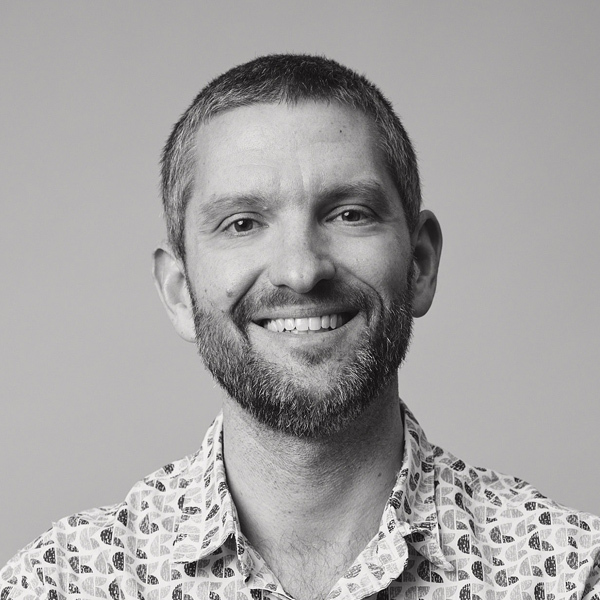Person before portfolio
It’s time for a radical shift in how we present ourselves as designers.

My website needs some love. The design is showing its age—but even worse — I’ve been too busy to update it so it doesn’t even represent my best work.
Sound familiar? Many creatives find themselves in this conundrum. It’s difficult to work on your own website when you’re flat-out designing for others. We can’t make enough time to work on our business because we’re too busy working in it.
I’ve reached a tipping point where my website no longer represents who I’ve become. So, despite being neck-deep in good client work, I’ve devoted myself to slowly chipping away at a new design for my freelance business.
Like any good design process, I’m starting with content first. I fired up Google docs and began spewing out everything my new website needs to say about the current state of my business. And it’s got me thinking that most of us aren’t saying the right things — not even close.
We talk a lot while saying nothing
Part of the problem lies with titles and industry buzzwords. I don’t give myself a title, I just call myself a “designer”. But I have been guilty in the past of regurgitating the same meaningless design terms that oversaturate our portfolios.
How often does a design agency’s website start with some variation of this:
We use empathy & design thinking to create delightful & innovative digital experiences.
It sounds like a lot, but it’s saying almost nothing at all. It’s saying I know a bunch of buzzwords but I don’t know what makes me unique. Most of us are using the first 5 seconds of our visitor’s attention telling them we are exactly the same as everyone else.
I’m done playing that game. I want my portfolio to demonstrate why I’m more valuable than other options, not how I can blend into the crowd.
We favour pretty over deep
Another part of the problem is our obsession with pretty images. Most portfolios prioritise pictures over words; deliverables over process. But it’s easy to fake superficially good-looking design, and many clients aren’t savvy enough to tell the difference. A Dribbble shot with a lot of views doesn’t determine the worth of a good designer. An over-designed, tarted-up case study doesn’t compensate for the mediocre work it’s meant to be presenting.
The experience of working with a good designer is far more than a handful of visual artefacts they spit out at the end of a project. But it’s also important not to fall into the trap of talking too much about “process” as if knowing the “right” steps of UX designs makes you special. We’ve all learned that same process. I want to see what unique challenges you faced and how creatively you solved them.
What really matters is how working with you is better than working with someone else. What about your methods, communication, and collaboration style produces better results than your competitors? What about your commitment and breadth of your experience makes you a safer, more reliable choice?
Images rarely communicate that value, yet those qualities are most likely to attract the best clients. So why have we shunned words in favour of mockups?
Call me crazy, but I’m tempted to make my next portfolio a wall of text, with images as secondary supporting content. Images may pique the initial interest, but words communicate the deeper value and close the sale.
It’s time for a portfolio revolution
I’ve already seen the signs of it beginning.
Is it just me, or have the old design show-off platforms like Dribbble gotten eerily quiet lately? I believe the pandemic has forced people to rethink their priorities, and vanity has started losing out to practicality.
Employers, being faced with a generation that needs genuine meaning to get passionate about work, are finally learning that people are more important than credentials and portfolios. Finding the right attitudes create long-term partnerships. Skills can be easily learned, work ethic can’t.
So take a critical look at your portfolio. Does it show your work without explaining its value? Does it talk about your skills and process (which are the same as everyone else’s skills and processes) without conveying what’s actually unique about your professional relationships?
If you answered “yes” or even “maybe”, it’s time for your own portfolio revolution. Throw away the buzzwords, get more genuine with the images, and don’t be afraid to say something different. Something more real.
Tell me more about you. Not about your software proficiency or how many cups of coffee you drink. Tell me about what drives and you fulfils you — what makes you wake up each day and love to be a designer. Tell me your magic mix of experience and abilities that add value to any organisation and to the world.
We’re tired of the trendy imagery and design terminology. It’s time for more humanity.
Want to comment?
See this story on Medium
Hi, I'm Benek Lisefski. Since 2001 I've run my own independent design business. Join me as I unfold 20 years of freelance business knowledge: honest advice and practical tips to help you take your indie career from good to great.
MediumTop writer in Design, Business, Creativity, and Entrepreneurship.
 Menu
About
Menu
About


